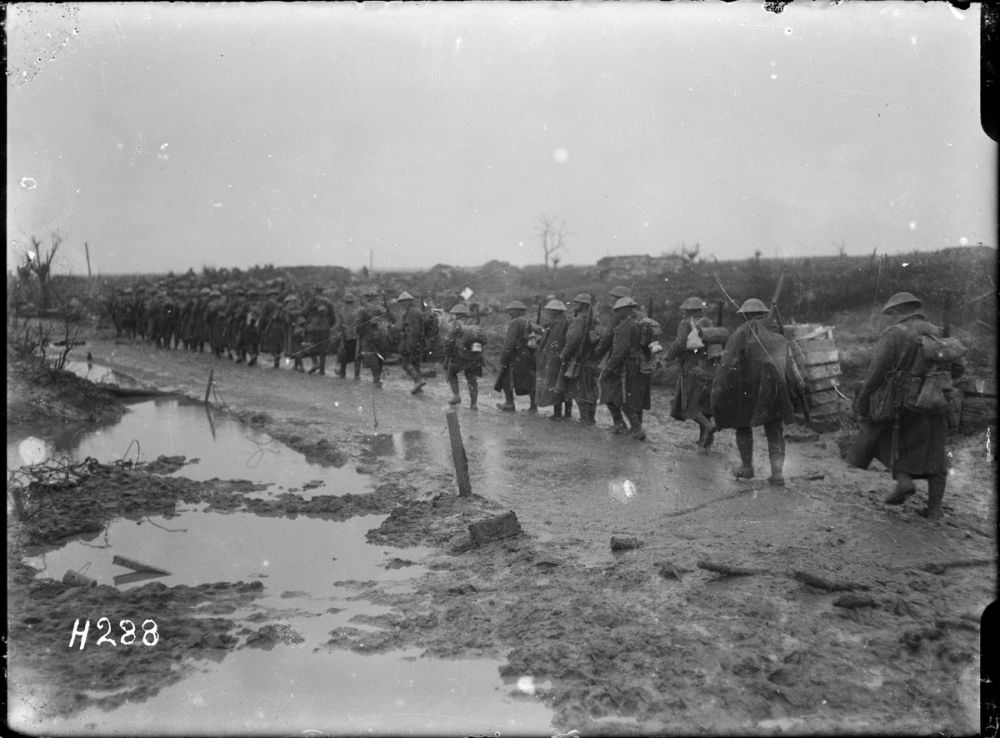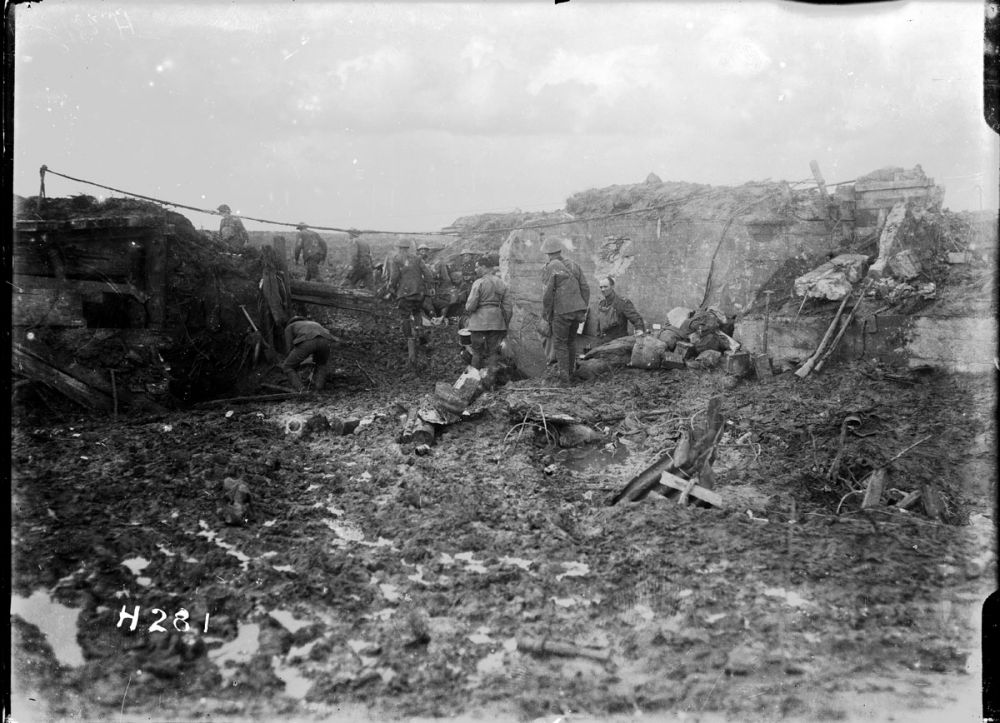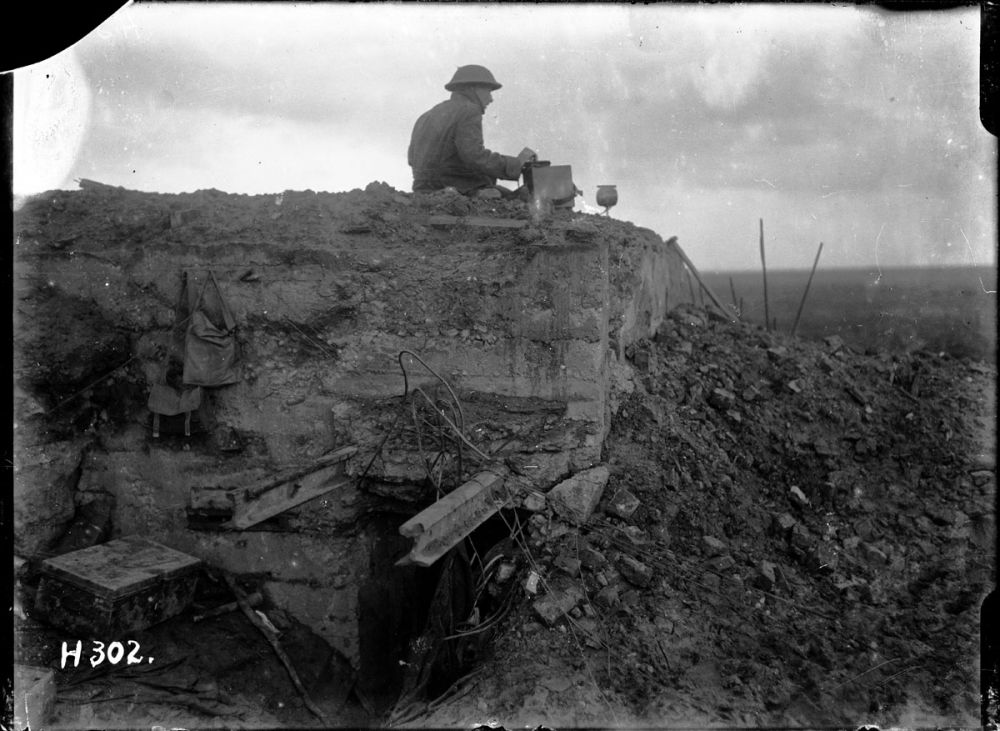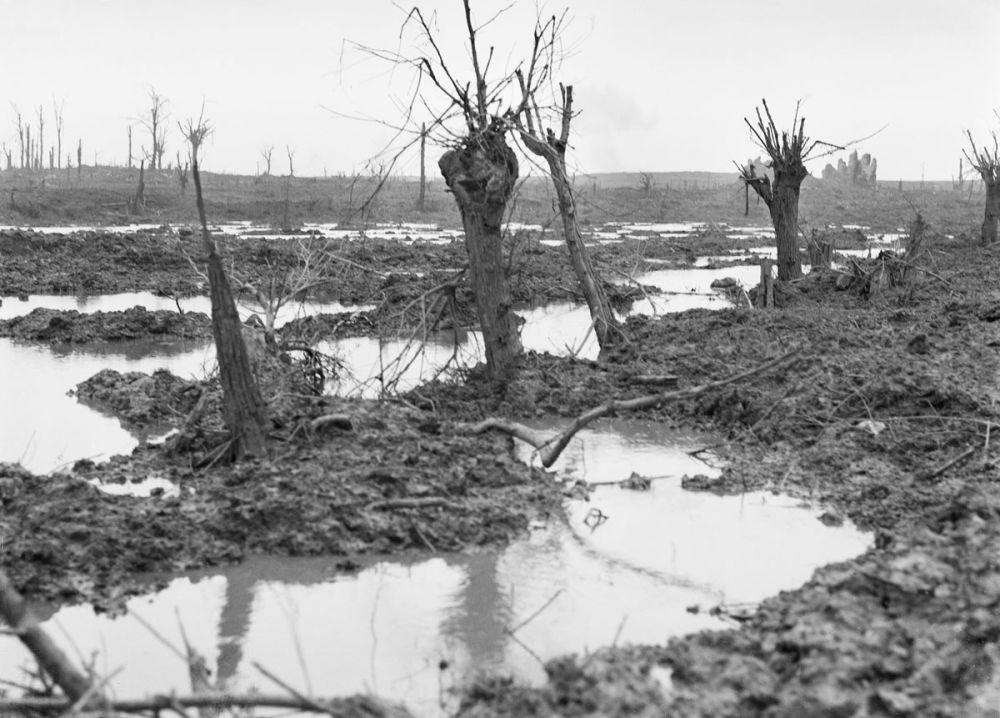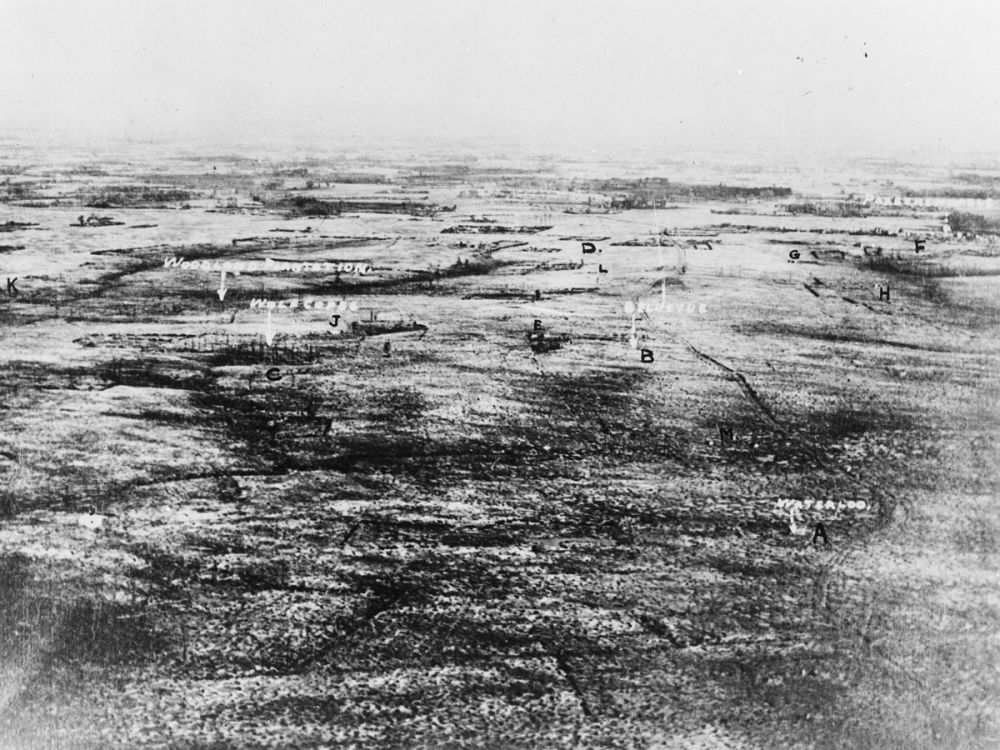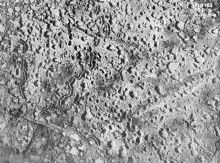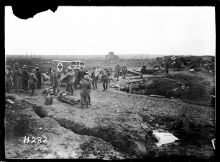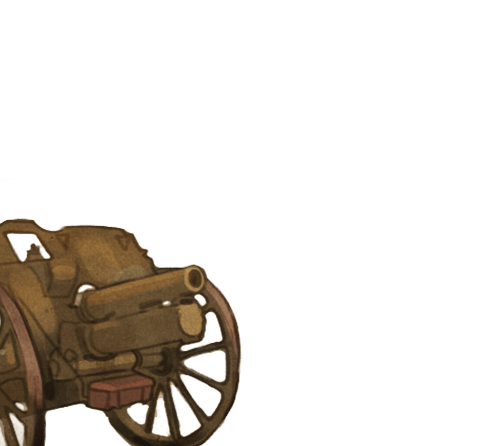Wolf Farm
This was the furtherest point reached by the New Zealand Rifle Brigade in the attack on 12 October 1917. In front of you to your right is Wolf Farm, and Bellevue Spur is the sloping high ground in the distance. Bellevue Spur was the initial New Zealand objective on 12 October and if you follow this spur along the skyline, you can see the spire of the village of Passendale which was the final objective for Godley’s 2nd Anzac Corps.
On the slope itself, in fact in this area around you, none of these houses or trees still stood but all of the farm house cellars had been converted into German strongpoints, manned by machine guns and snipers. The only evidence left of a farm house was usually the red of the mud where the brick dust had mixed in with the earth. Looking back behind you, the start line on this flank for the attack was the farmhouse complex on the skyline - that was the New Zealand startline - and all of this land around you was covered in craters and mud.
If you can imagine German defenders in their bunkers during the artillery bombardment once they knew the attack was actually happening - they would quickly set up their machine guns on top or next to their bunkers. The Germans would see long single files of infantry, wading their way, forward in the mud, and as their machine guns opened up they would force entire battalions to the ground.
On the morning of 12 October the New Zealand Rifle Brigade started pushing forward to this point - they suffered many casualties. Finally a mix of all three battalions of the Rifle Brigade reached the general line of the road, seizing this piece of high ground. They then tried to push forward, in the direction towards Wolf Farm and onto Bellevue Spur, but this failed. Some fought their way down into Wolf Farm, taking out bunkers - but barbed wire stopped them getting any further. Today, if you walked up there, it would only take you 15 minutes. In 1917 - the reality was hours of crawling and wading through mud and water, against artillery, machine gun and rifle fire. But here is where they were stopped.
They were defeated by the flooded stream, the mud, and the uncut wire, and they could go no further.


